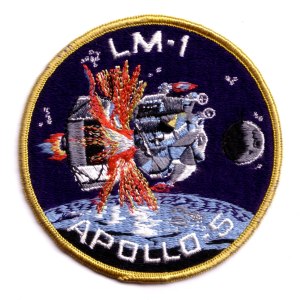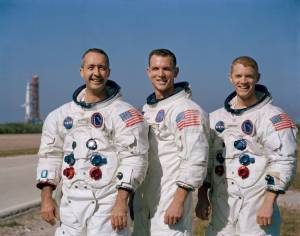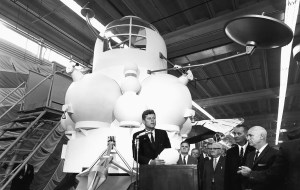The Grumman Aircraft Corporation in Bethpage, NY, built the Apollo Lunar Module (LM), the vehicle to take two astronauts down to the lunar surface and return them to the waiting Command Module in lunar orbit. Before NASA could declare the LM safe to fly astronauts, it required testing in Earth orbit without a crew. Grumman delivered the first flight unit, LM-1, to NASA’s Kennedy Space Center (KSC) in Florida in June 1967 where workers prepared it for flight. During the Jan. 22, 1968, flight of Apollo 5, LM-1 simulated the steps of a lunar landing mission, testing the engines of the descent stage, used to land the crew on the Moon, and the ascent stage, used to return them into lunar orbit.
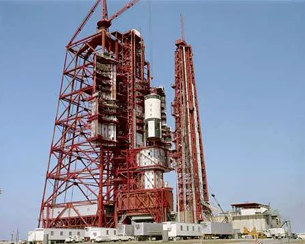
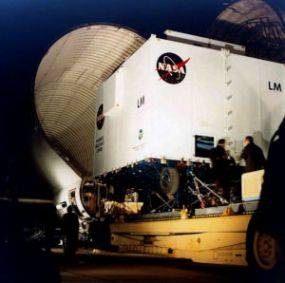
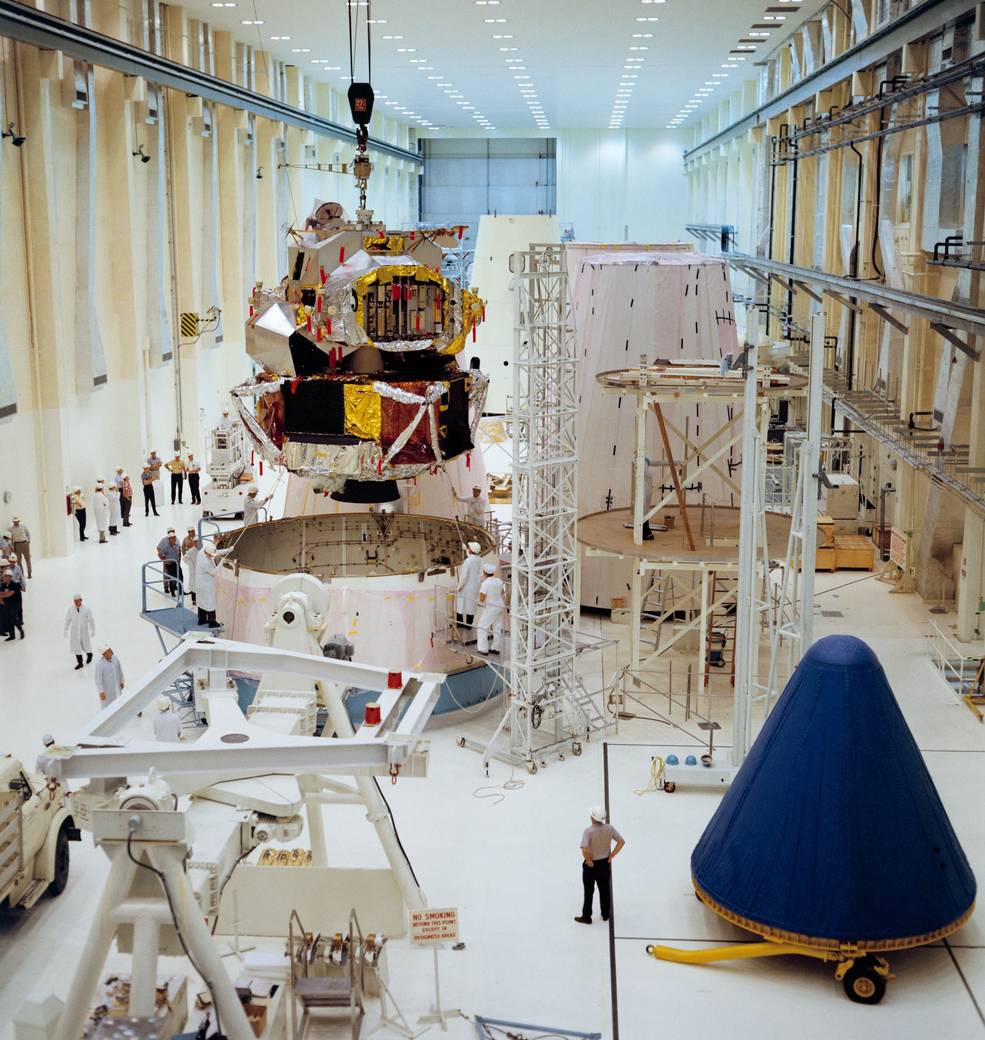
Left: Workers stack the S-IVB second stage of the Saturn IB rocket for the Apollo 5 mission at Launch Complex 37B at NASA’s Kennedy Space Center (KSC) in Florida. Middle: The first Lunar Module (LM) flight article, LM-1, arrives at KSC. Right: Workers in KSC’s Manned Spacecraft Operations Building assemble LM-1 with its Spacecraft LM Adapter, with the nose cone covered in blue protective material at right.
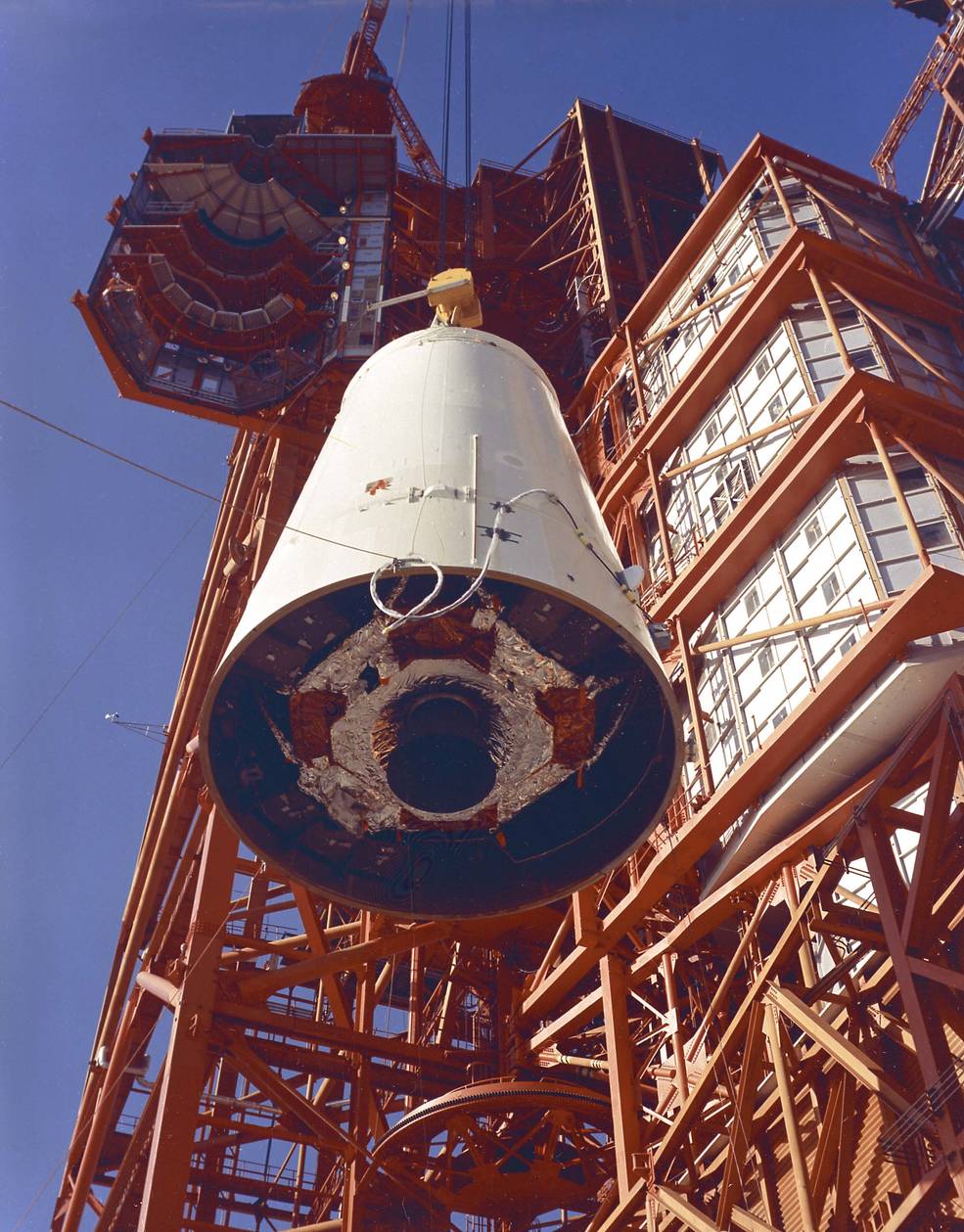
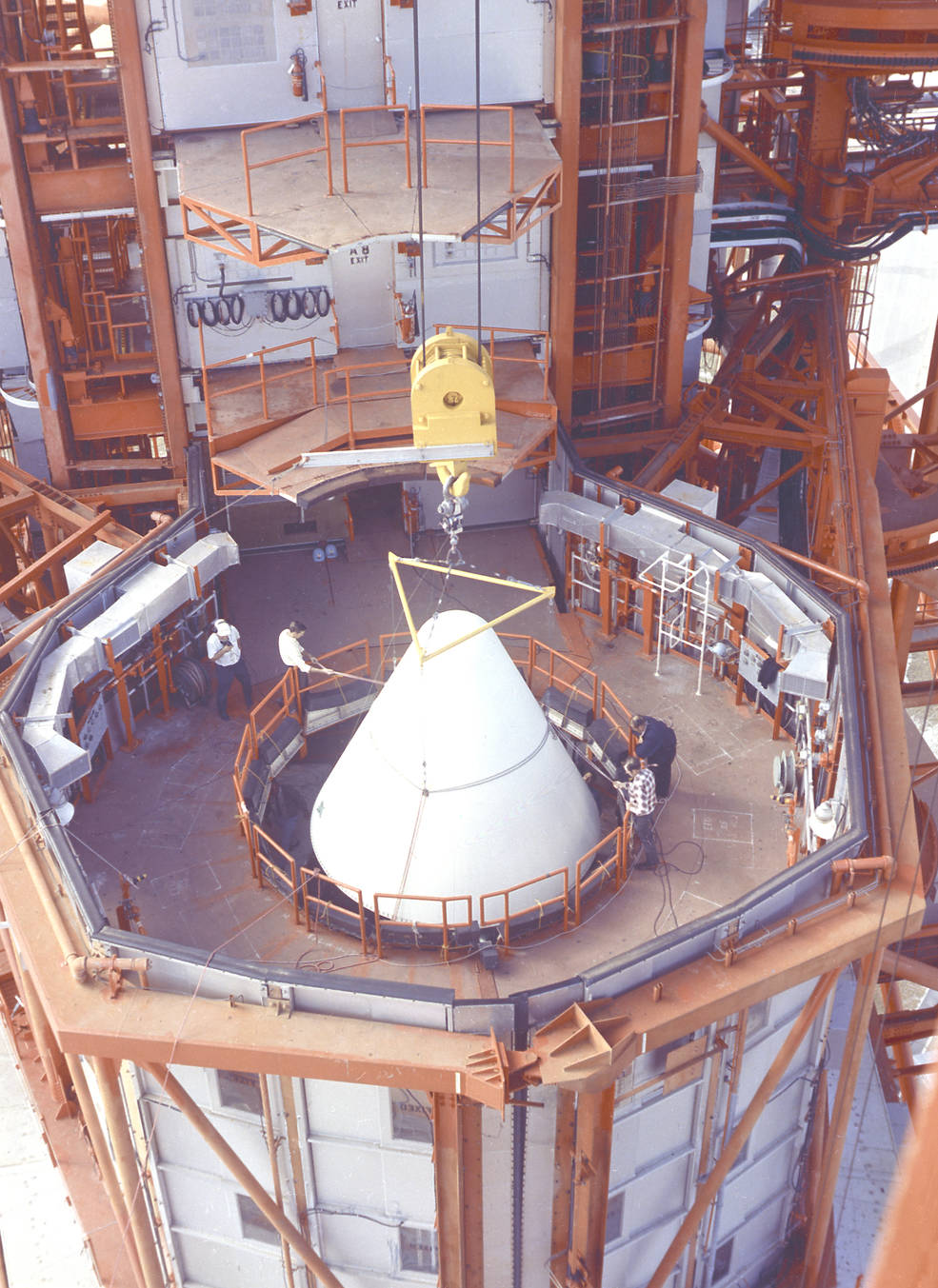
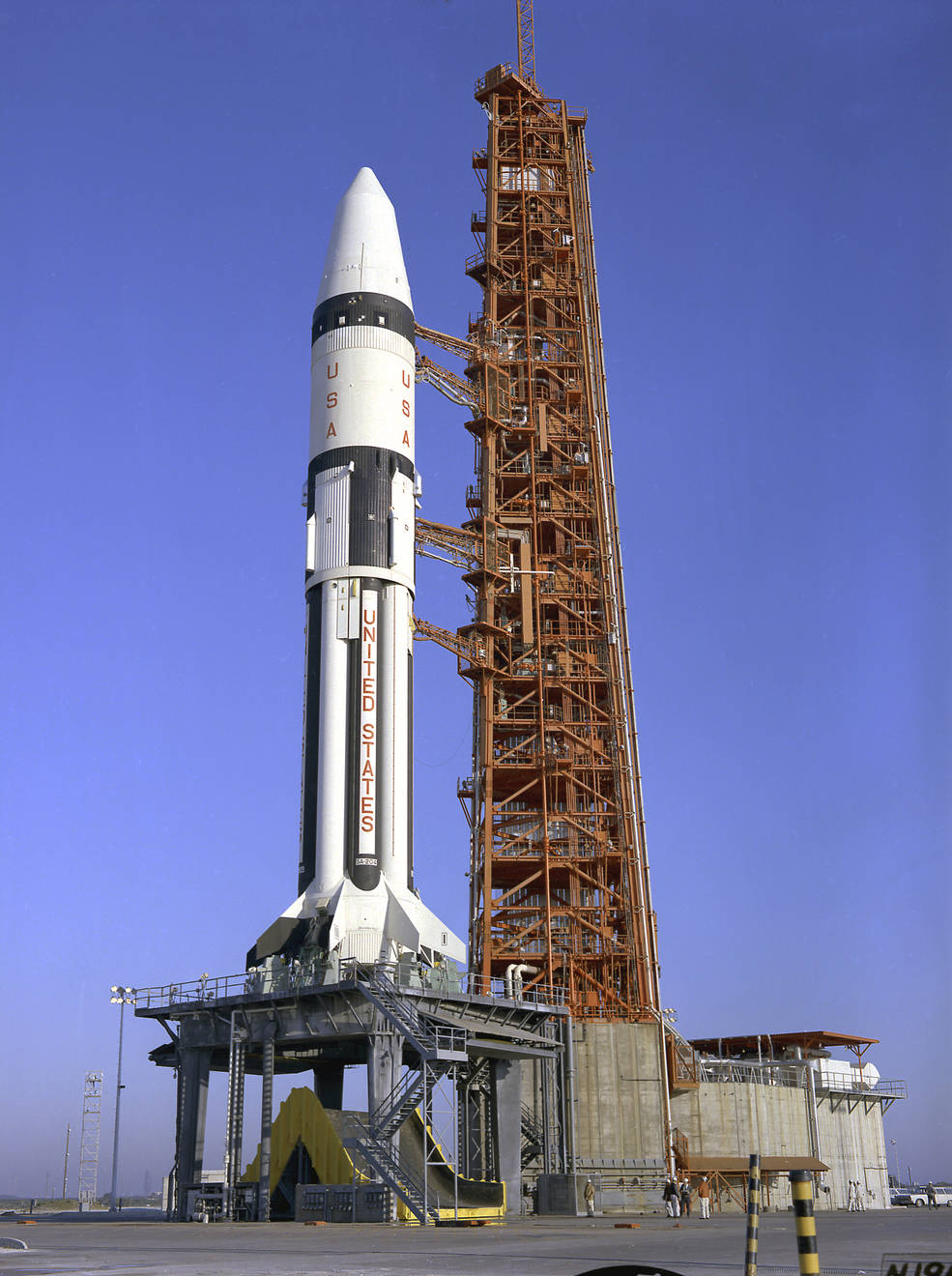
Left: Workers stack Lunar Module -1 (LM-1) encased in its Spacecraft LM Adapter onto its Saturn IB rocket at Launch Complex (LC) 37B at NASA’s Kennedy Space Center (KSC) in Florida. Middle: Workers top off the rocket with an aerodynamic nose cone. Right: The Apollo 5 Saturn IB on LC-37B ready for launch.
NASA managers had hoped to complete the first uncrewed test flight of the LM in the spring of 1967 and in preparation stacked the AS-206 Saturn IB rocket on Launch Pad 37B in January. Delays in the delivery of LM-1 to KSC and the disruption of all Apollo schedules in the wake of the Jan. 27 Apollo 1 fire led managers to alter these plans. The AS-204 rocket for Apollo 1 remained undamaged from the fire, and managers on March 20 announced that it would launch the Apollo 5 LM-1 mission. That required destacking AS-206 at LC-37B and placing it in long-term storage – it eventually flew in 1973 to launch the first crew to the Skylab space station. Meanwhile, workers destacked AS-204 at LC-34 on April 6, inspected it thoroughly, and restacked it at LC-37B, completing that activity on April 10. The LM-1 flight article arrived in KSC’s Manned Spacecraft Operations Building (MSOB) on June 23 but required significant work before managers declared it ready for flight. As a weight-saving measure, and because it was not planned to land anywhere, this spacecraft didn’t carry any landing legs. Workers in the MSOB completed the engineering work and placed LM-1 inside the Spacecraft LM Adapter (SLA). Instead of an Apollo Command and Service Module (CSM), they topped the SLA with a nine-foot tall aerodynamic cone since the Saturn IB rocket did not have sufficient thrust to place both a CSM and a LM into orbit. Workers at LC-37B stacked LM-1 inside the SLA atop the AS-204 rocket on Nov. 19 to begin prelaunch testing including a Countdown Demonstration Test completed on Jan. 19, 1968.
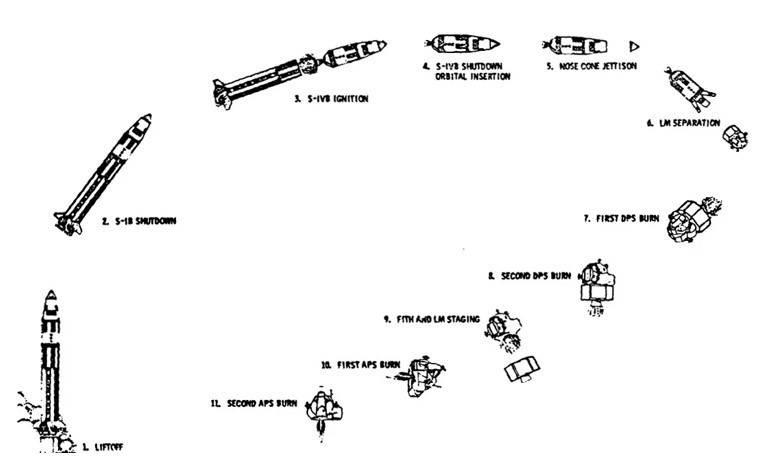
Schematic representation of the planned Apollo 5 mission.
The Apollo 5 mission called for the LM-1 to separate from the Saturn rocket’s S-IVB second stage and after a three-hour cold soak, during which controllers in the Mission Control Center at the Manned Spacecraft Center, now NASA’s Johnson Space Center in Houston, verified the spacecraft’s systems, perform two firings of the Descent Propulsion System (DPS) engine. The first 39-second burn would simulate a LM deorbit burn by first firing at 10% thrust, then ramping up to 100% thrust for the final 12 seconds of the burn. The second, much longer 739-second burn would simulate the descent to the lunar surface, with the engine burning at various thrust settings. With that burn complete, the ascent stage would simulate an abort staging scenario, a so-called “fire-in-the-hole” maneuver, by firing the Ascent Propulsion System (APS) engine for five-seconds. A subsequent APS burn would last about 445 seconds until depletion of the fuel tanks, ending the primary 6.5-hour mission and leaving the LM ascent stage in a high-altitude elliptical orbit.
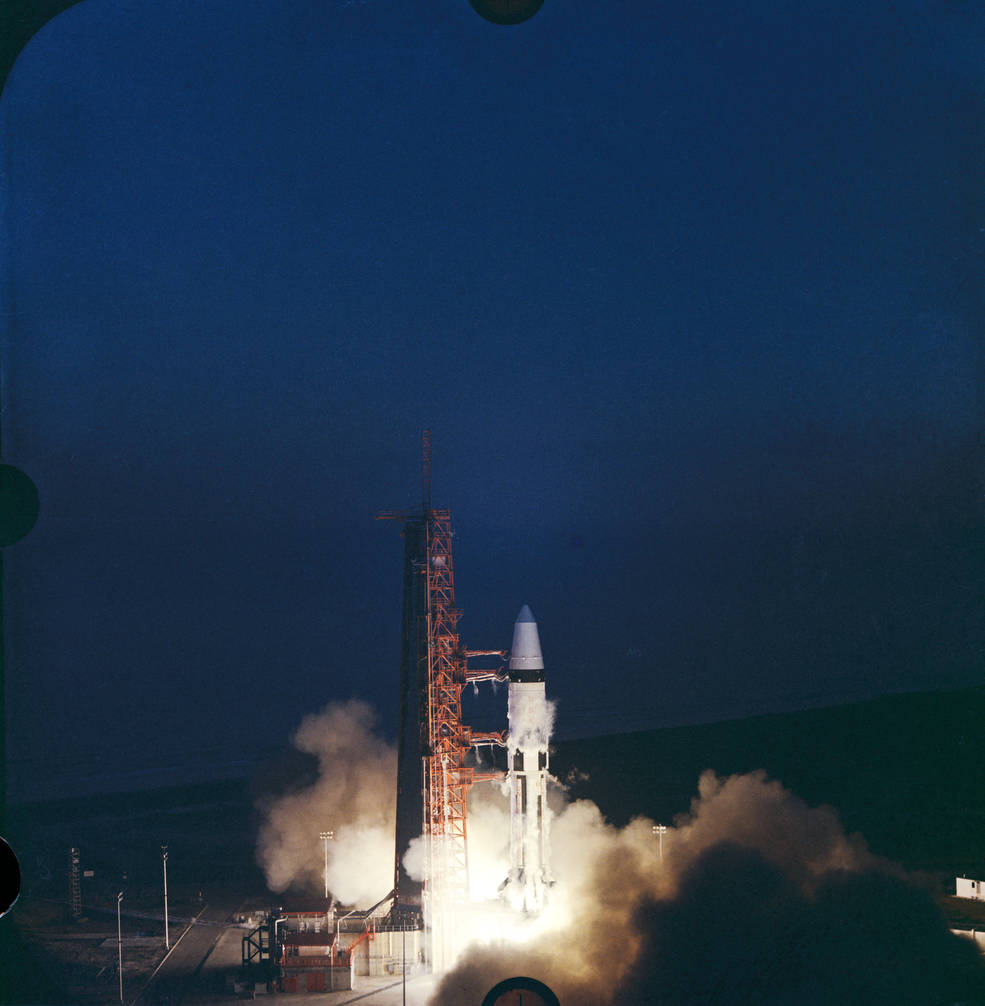
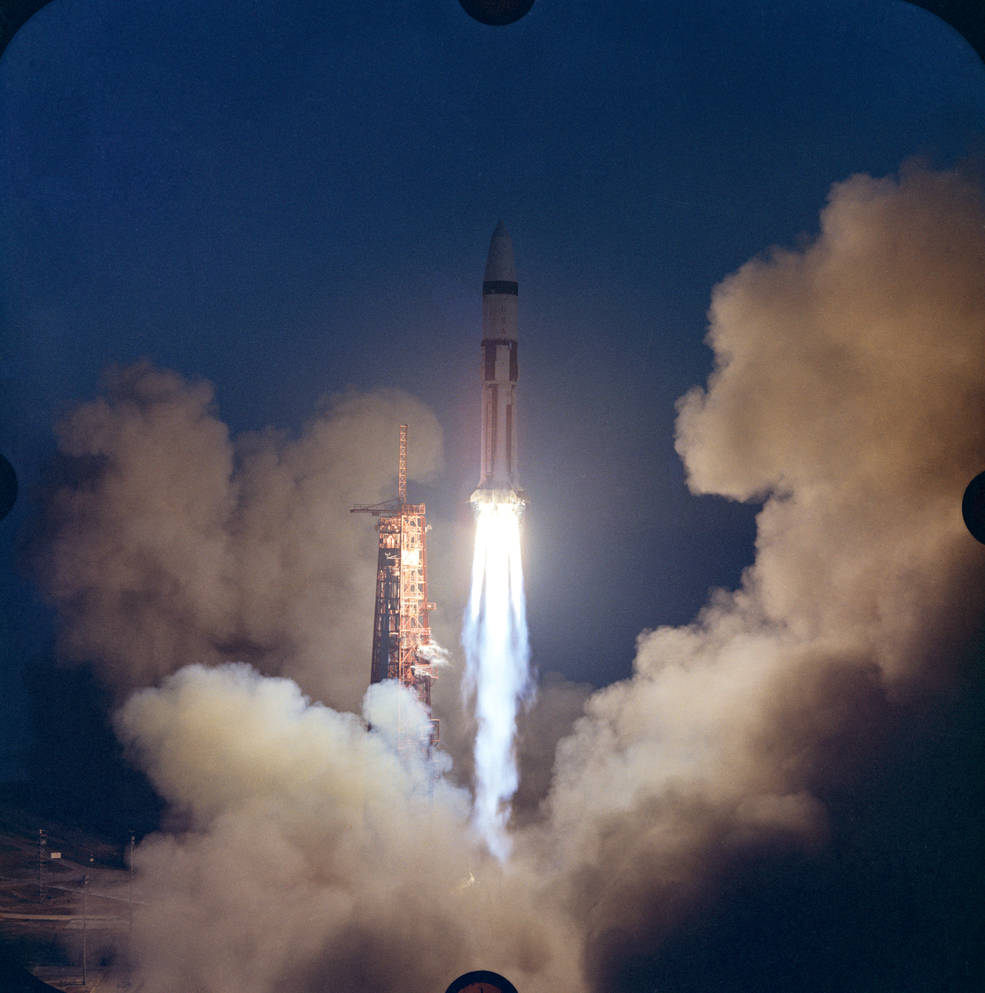
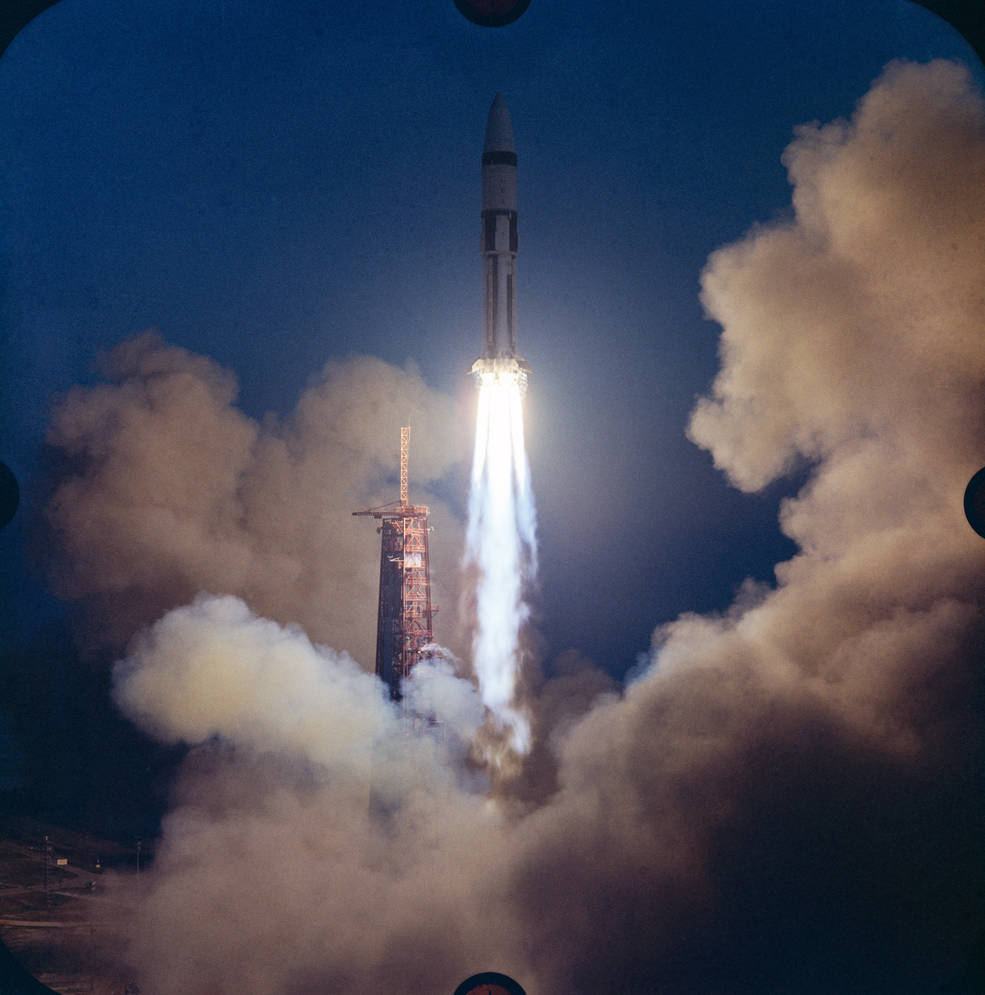
Left: Liftoff of Apollo 5 from Launch Complex 37B on the first Lunar Module test flight. Middle: The Saturn IB clears the launch tower. Right: Apollo 5 continues its ascent.
The launch of Apollo 5 carrying LM-1 took place on Jan. 22, 1968, with the Saturn IB rocket taking off from LC-37B just before sunset. As it turned out, the next launch from this pad, rebuilt for a new fleet of rockets, would not occur for nearly 35 years. Ten minutes later, the spacecraft achieved orbit. First, the nose cone separated, followed by the opening of the four SLA panels, and finally the separation of LM-1 using its Reaction Control System (RCS) thrusters about halfway through its first orbit around the Earth. In Mission Control, engineers led by Flight Director Eugene F. “Gene” Kranz completed the two-orbit checkout of the LM’s systems to prepare for the first DPS burn. The engine ignited as planned but shut down after just four seconds. Engineers quickly identified the problem – the LM’s guidance computer shut the engine down because it failed to reach the required thrust within four seconds. Engineers had missed that for this test, the engine required six second to reach that thrust level. Ground controllers quickly devised an alternate plan to meet the mission’s key requirements. After deactivating the guidance computer, during the LM’s fourth orbit they commanded the DPS to fire for 33 seconds followed one minute later by a second 28-second burn. After that, the APS successfully completed the abort staging test with a 60-second APS burn. According to Kranz, “The fire-in-the-hole abort was the most critical test of the mission and one we had to accomplish successfully prior to a manned mission.” For the final APS burn during the LM’s fifth orbit, controllers reactivated the LM’s guidance system but failed to update it to account for the time it was turned off and that the LM had performed the staging test. For the RCS attitude control firings, the guidance computer assumed the heavy descent stage was still attached and used a much higher than planned amount of fuel, eventually depleting the tank. Enough propellant remained to maintain the ascent stage’s attitude for the first 161 seconds, but for the final 190 seconds of the burn-to-depletion firing, the ascent stage began to tumble and did not achieve the planned high orbit, ending the mission after 7 hours and 52 minutes. It burned up upon reentry in the Earth’s atmosphere over the Pacific Ocean near the coast of Central America. The descent stage likewise burned up when it reentered on Feb. 12, 1968.
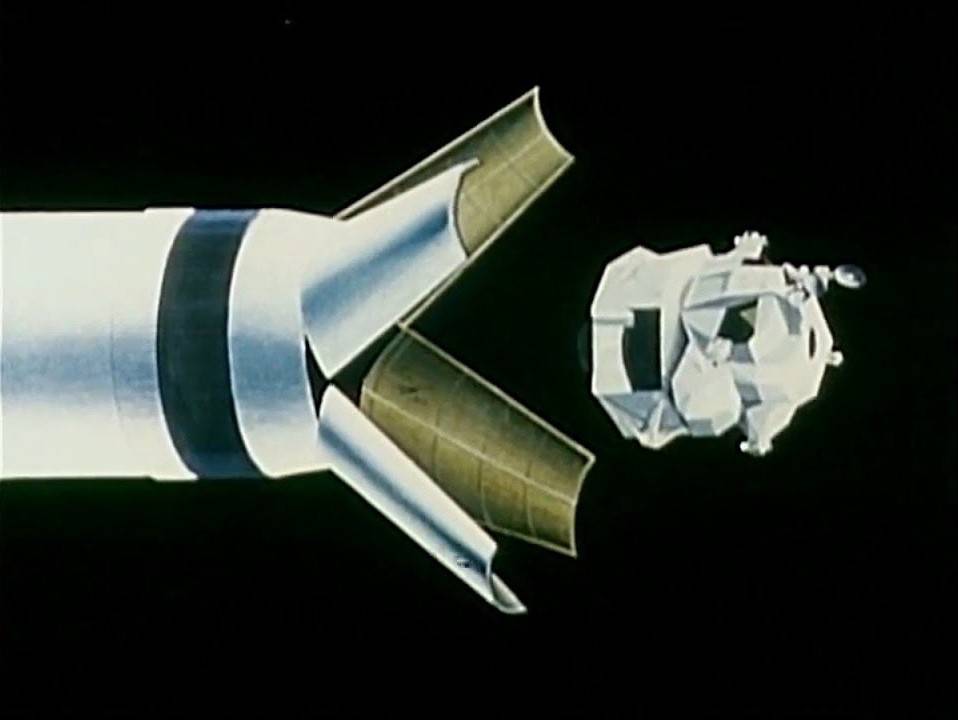
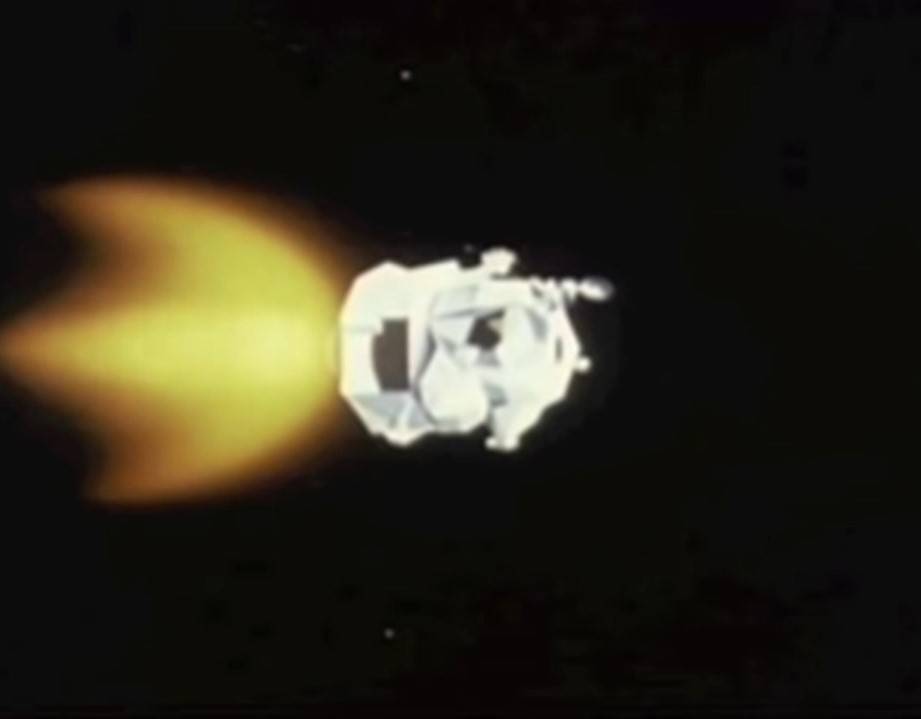
Left: Illustration of the Apollo 5 Lunar Module-1 (LM-1) separating from the Saturn IB rocket’s upper stage. Right: Illustration of the LM-1 ascent stage firing.
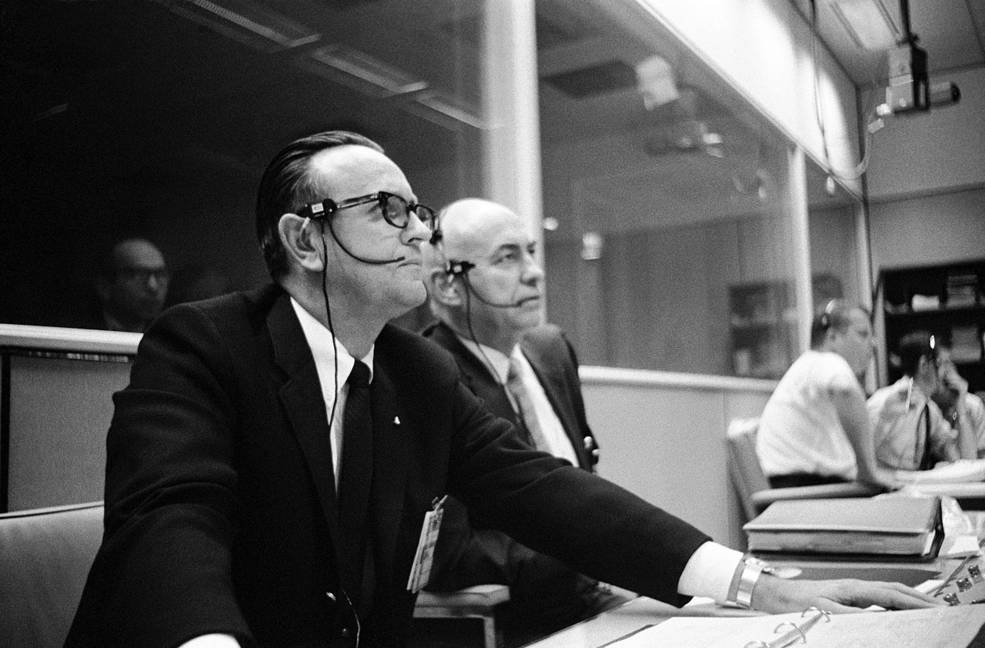
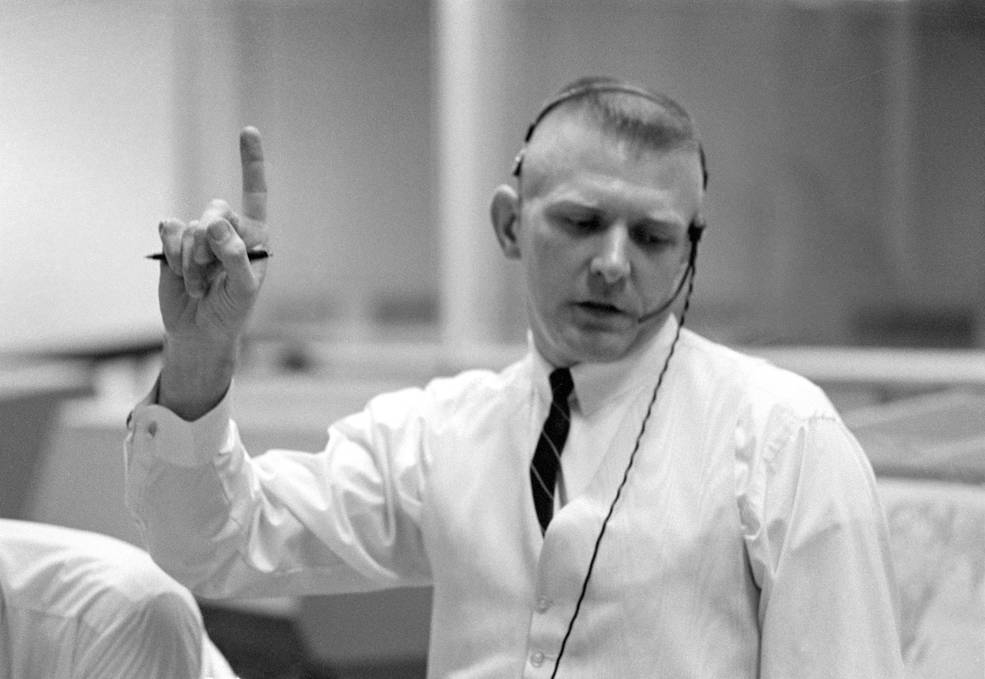
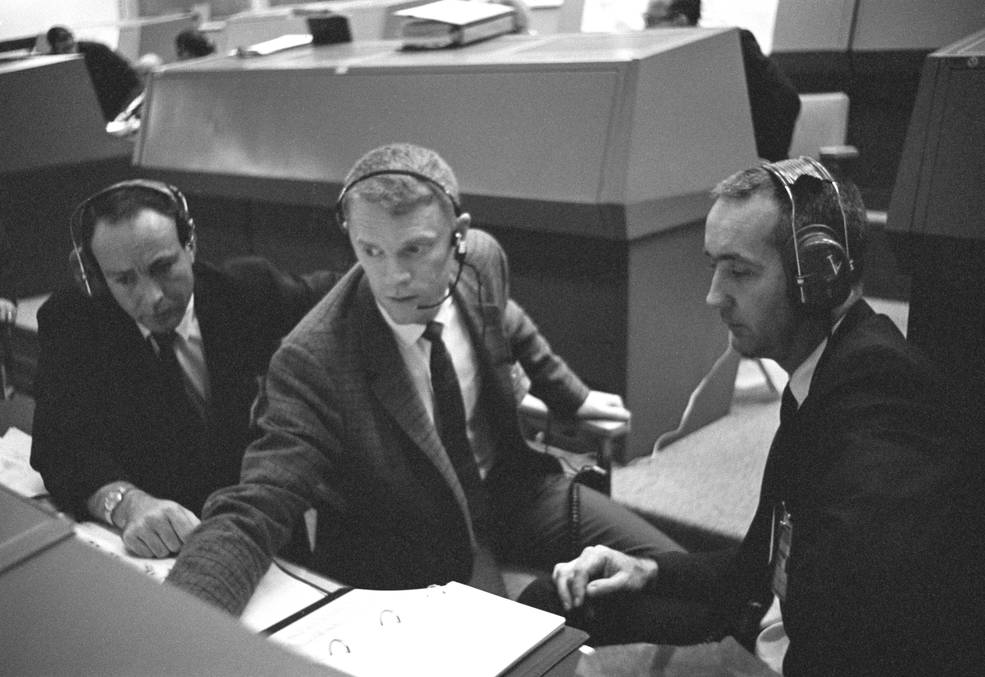
Left: In the Mission Control Center at the Manned Spacecraft Center (MSC), now NASA’s Johnson Space Center in Houston, Director of Flight Operations Christopher C. Kranz, left, and MSC Director Robert R. Gilruth monitor the progress of the Apollo 5 mission. Middle: Apollo 5 Flight Director Eugene F. “Gene” Kranz makes a point during the mission. Right: Astronauts Edgar D. Mitchell, left, Russell L. “Rusty” Schweickart, and James A. McDivitt monitor Apollo 5 – McDivitt and Schweickart flew the first crewed test of the Lunar Module during the Apollo 9 mission in March 1969.
Although the Apollo 5 mission did not complete the first LM mission exactly according to plan, it did achieve enough of its objectives to be considered a success. And it showed the responsiveness of the Mission Control team to rapidly react to an off-nominal situation and devise an alternate plan to achieve success. At the postflight press conference, Apollo Spacecraft Program Manager George M. Low commented that the success of Apollo 5 “…was due to the fact that we had a good piece of hardware; it was due to the fact that we had outstanding flight control teams under Gene Kranz’ able leadership.” Considering the success of Apollo 5, NASA announced on March 15 that a second uncrewed LM test would not be required.* The next time a LM flew in space, it carried astronauts during the Apollo 9 mission in March 1969. Managers deemed the Saturn IB so reliable that its next launch carried a crew to test the Apollo CSM in Earth orbit during the Apollo 7 mission in October 1968. The flight of Apollo 5 brought NASA one step closer to a Moon landing before the end of the decade. For a NASA documentary of the Apollo 5 mission, visit https://www.youtube.com/watch?v=9519e2ctqPQ
For many Americans, two major news events unfolding halfway around the world overshadowed the Apollo 5 mission. The day the mission ended, North Korea seized the U.S.S. Pueblo and its crew and held them captive for 11 months. They released the crew in December, as Apollo 8 approached the Moon. A week after Apollo 5, the ferocity of the Tet Offensive in Vietnam shocked Americans, signaling an unwelcome escalation of that conflict. The two events inaugurated a turbulent 1968.
*The LM from that would-be mission, LM-2, is on display at the Smithsonian Institution’s National Air and Space Museum in Washington, D.C.






























